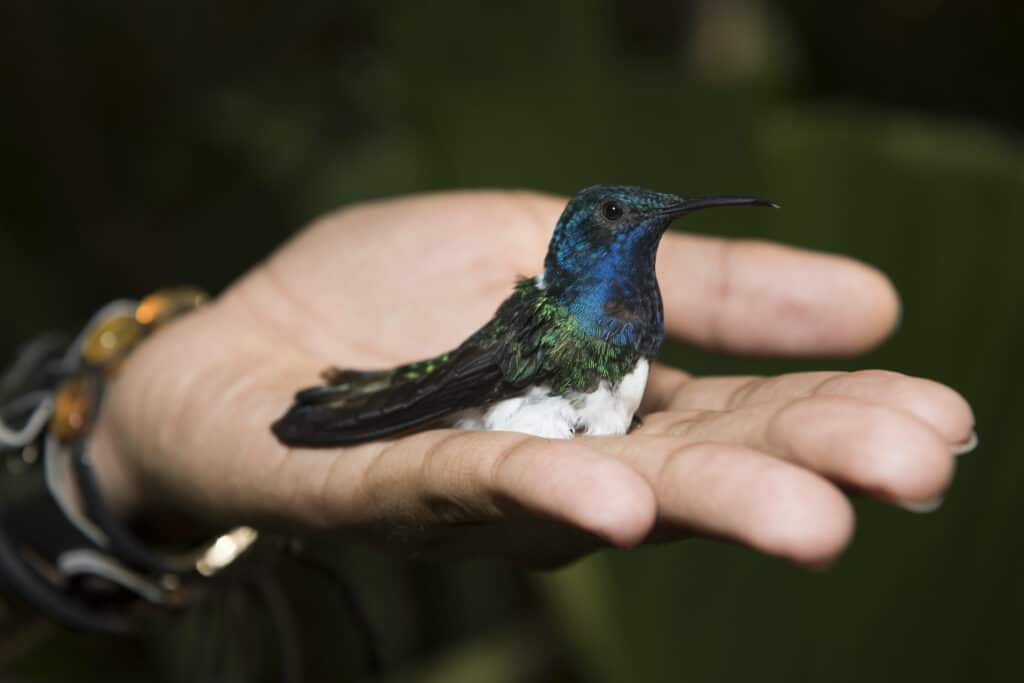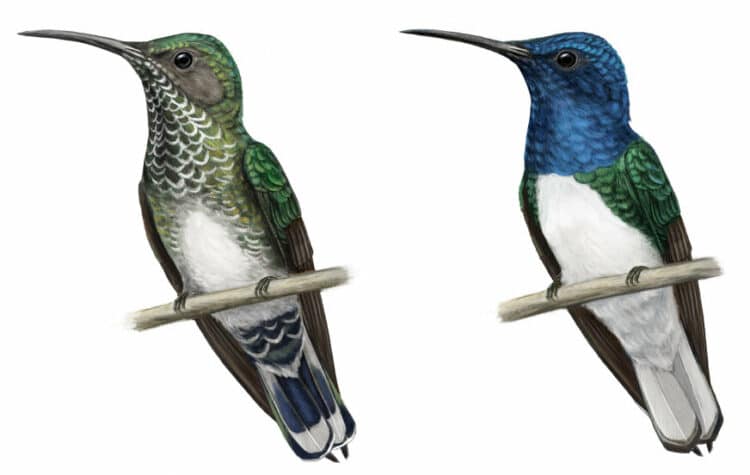
Female hummingbirds disguise themselves as males to avoid aggression
(ORDO NEWS) — In Jacobin hummingbirds, males are real “hooligans”: they behave aggressively towards females, driving them away from feeding places, so female birds have to constantly hide and try not to catch the “cavaliers” in the eye.
However, about a fifth of the females have chosen a different strategy: instead of becoming the dull green coloration characteristic of their sex upon reaching puberty, they retain a bright blue-white plumage, masquerading as males.
The Jacobin Hummingbird ( Florisuga mellivora ) is a fairly large species of hummingbird common in South America. Males of this species are distinguished by aggressive behavior: they defend their territory, driving away rivals from food sources, while not other males, but females get the most.
The reason for this “injustice” is the size and physiological characteristics: Jacobin females are smaller than males and fly worse, so they often become “pears for whipping”. Most females in this situation can only hide, but about one in five hummingbirds chooses a different strategy: they disguise themselves as males.
The fact is that in young hummingbirds of both sexes, the color is bright and resembles the coloring of the male, but in adult females, the plumage becomes dimmer, in green and white tones.
Female camouflagers, when they reach maturity, acquire the bright blue-white coloration of the male, although they do not surpass their ordinary companions either in body size or in the strength of their wing beats.
Such females do not differ in behavior either: while males usually stay within a certain area, visiting a few feeding places, females of both types of coloring behave more freely and fly around a vast territory, collecting nectar from many flowers.
In other words, the strange coloration of these 20 percent of females does not seem to be associated with elevated testosterone levels or a glitch in the genes, like primary hirsutism in humans.
Females do not “turn” into males (then their behavior would change), namely, they “pretend” to be them - that is, there is another example of intraspecific mimicry in animals, when representatives of one sex disguise themselves as representatives of the other.

Now the researchers are going to study the genetic basis of such mimicry by comparing females with “normal” and “male” plumage to determine how this deception came about.
—
Online:
Contact us: [email protected]
Our Standards, Terms of Use: Standard Terms And Conditions.









